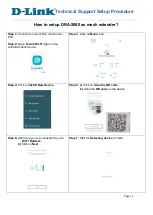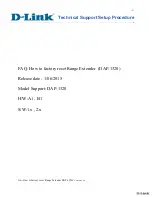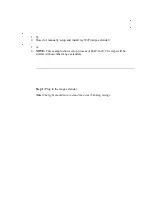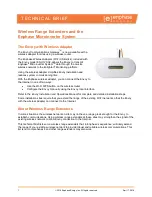
34
FUR
THER
INFORMA
TION
APPENDIX 1 - IGMP
Internet Group Management Protocol
Where an AdderLink XDIP transmitter node is required
to stream video to two or more receiver nodes,
multicasting is used.
Multicasting involves the delivery of identical data to
multiple receivers simultaneously without the need to
maintain individual links. When multicast data packets enter
a subnet, the natural reaction of the switches that bind
all the hosts together within the subnet, is to spread the
multicast data to all of their ports. This is referred to as
Multicast flooding and means that the hosts (or at least
their network interfaces) are required to process plenty of
data that they didn’t request. IGMP offers a partial solution.
The Internet Group Management Protocol (IGMP) is
designed to prevent multicast flooding by allowing
switches to check whether host computers within
their care are interested in receiving particular multicast
transmissions. They can then direct multicast data only to
those points that require it and can shut off a multicast
stream if the subnet has no recipients.
There are currently three IGMP versions: 1, 2 and 3, with
each version building upon the capabilities of the previous
one:
•
IGMPv1 allows host computers to opt into a multicast
transmission using a Join Group message, it is then
incumbent on the router to discover when they no
longer wish to receive; this is achieved by polling
them (see IGMP Querier below) until they no longer
respond.
•
IGMPv2 includes the means for hosts to opt out as well
as in, using a Leave Group message.
•
IGMPv3 encompasses the abilities of versions 1 and 2
but also adds the ability for hosts to specify particular
sources of multicast data.
AdderLink XDIP nodes make use of IGMP v2 and v3 (v3
is used by default unless the XDIP nodes see v2 used by
the network, in which case they will automatically drop
down to IGMP v2) when performing multicasts to ensure
that no unnecessary congestion is caused.
IGMP Snooping
The IGMP messages are effective but only operate at
- intended for routers to determine whether
multicast data should enter a subnet. A relatively recent
development has taken place within the switches that
glue together all of the hosts within each subnet: IGMP
Snooping. IGMP snooping means these layer 2 devices
now have the ability to take a peek at the IGMP messages.
As a result, the switches can then determine exactly
which of their own hosts have requested to receive a
multicast – and only pass on multicast data to those hosts.
IGMP Querier
When IGMP is used, each subnet requires one
switch to act as a Querier. In this lead role, the switch
periodically sends out IGMP Query messages and in
response all hosts report which multicast streams they
wish to receive. The Querier device and all snooping
Layer 2 switches, then update their lists accordingly (the
lists are also updated when Join Group and Leave Group
(IGMP v2 or v3) messages are received).
IGMP Fast-Leave (aka Immediate Leave)
When a device/host no longer wishes to receive a
multicast transmission, it can issue an IGMP Leave Group
message as mentioned above. This causes the switch to
issue an IGMP Group-Specific Query message on the
port (that the Leave Group was received on) to check
no other receivers exist on that connection that wish to
remain a part of the multicast. This process has a cost in
terms of switch processor activity and time.
Where AdderLink XDIP nodes are connected directly
to the switch (with no other devices on the same port)
then enabling IGMP Fast-Leave mode means that switches
can immediately remove receivers without going through
a full checking procedure. Where multiple nodes are
regularly joining and leaving multicasts, this can speed up
performance considerably.
















































